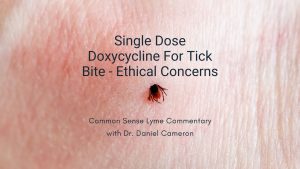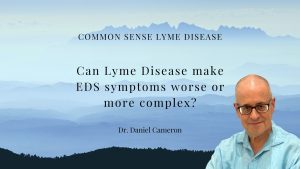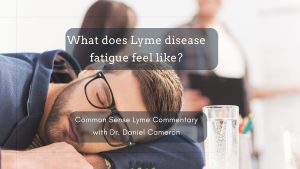
“Case report: Substantial improvement of autism spectrum disorder in a child with learning disabilities in conjunction with treatment for poly-microbial vector borne infections,” by Drs. Offutt and Breitschwerdt describes the case of an adolescent diagnosed with autism spectrum disorder, who had cognitive and neuropsychiatric symptoms which improved following treatment for Lyme disease and Bartonella.¹
The 14-year-old boy had been sick for years with neurologic and psychiatric issues and had visited several physicians seeking an explanation for the fluctuating nature of these symptoms.
His severe symptoms included: ADD/ADHD, tics (neck roll), anxiety, baby talk, immaturity, dysgraphia, oppositional behavior, low reading comp, stammering, depression, anger, picky eating and bed wetting.
On multiple occasions, the young man had behavioral outbursts, which led to his running away from home. He had received several diagnoses, including:
-
- Cerebellar hypoplasia (in utero)
- ADHD (onset at age 5)
- PANS – pediatric acute-onset neuropsychiatric syndrome (onset during elementary school; officially diagnosed at age 10)
- Autism (onset during elementary school; diagnosed at age 14)
- Autoimmune encephalopathy (diagnosed at age 14)
At age 10, the Cunningham Panel™ of tests revealed the presence of anti-neuronal antibodies with a borderline anti-Tubulin assay. At age 14, he was diagnosed with autoimmune encephalitis and began treatment with intravenous immunoglobulin (IVIG), which temporarily improved his symptoms.
“This case report provides further support to the growing body of literature indicating that infectious triggers may contribute to neuropsychiatric disorders…”
Further testing revealed the young man had been exposed to several tick-borne infections with serologic evidence of Bartonella and Lyme disease.
The patient was prescribed various treatments for Lyme disease and Bartonella. The list included amantadine, doxycycline, minocycline, amoxicillin, amoxicillin/clavulanate, clindamycin, IV ozone, gluten-free diet and a dairy-free diet.
“Following the introduction of a drug, most therapeutics, particularly antibiotics, were quickly discontinued due to intolerable side effects and flaring of behavioral symptoms,” wrote the authors.
“A transition to a new therapeutic regimen was implemented, gradually administering individual or combinations of multiple different antimicrobial agents, including disulfiram, rifampin, minocycline, rifabutin, clarithromycin, and methylene blue.”
Other therapies included probiotics, antioxidants, and anti-inflammatories.
Antibiotic treatments resulted in “substantial improvement” in cognitive and neurobehavioral symptoms, such as oppositional, defiant, anti-social, disordered mood, immaturity, tics.
The patient responded positively with a reduction or resolution of symptoms in conjunction with antibiotic therapy. He had a dramatic improvement in cognitive functions and was accepted into a 4-year college.
Lyme disease and Bartonella treatment led to several symptom improvements:
“Oppositional behavior and anger improved almost immediately after the initiation of disulfiram and these symptoms remained clear throughout the treatment period,” the authors wrote, but noted “squealing, grunting, grimacing, and stammering worsened when disulfiram was introduced.”
The boy’s “academic testing transitioned from the special education level to tenth grade level, as he no longer required the special accommodations that had been provided at his school.”
He transitioned to a regular classroom, was able to maintain adequate academic performance, improved his social skills, took a college entrance examination, and was accepted into a 4-year university.
Unfortunately, he was unable to discontinue the antibiotics without a flareup.
“His response to this therapeutic approach included improvement or elimination of a substantial number of neuropsychiatric symptoms and significant improvement in his academic status…”
The authors granted that their patient had a well-defined embryonic abnormality diagnosed in utero. Yet, “A decision was made to treat with antimicrobial agents targeting a potential infectious etiology, with secondary auto-antibody formation.”
They encouraged further research to define the extent to which occult infections can contribute to neuropsychiatric illness and symptoms associated with autism spectrum disorder.
Authors conclude:
-
- “We propose that a risk/benefit analysis in most patients diagnosed with autism spectrum disorder would warrant evaluation and treatment for potential chronic infectious triggers.”
- “This case report provides further support to the growing body of literature indicating that infectious triggers may contribute to neuropsychiatric disorders, including those in children who phenotypically present as academically challenged, or meet the criteria for autism spectrum disorder.”
Related Articles:
References:
- Offutt A, Breitschwerdt EB. Case report: Substantial improvement of autism spectrum disorder in a child with learning disabilities in conjunction with treatment for poly-microbial vector borne infections. Front Psychiatry. 2023;14:1205545. doi:10.3389/fpsyt.2023.1205545


